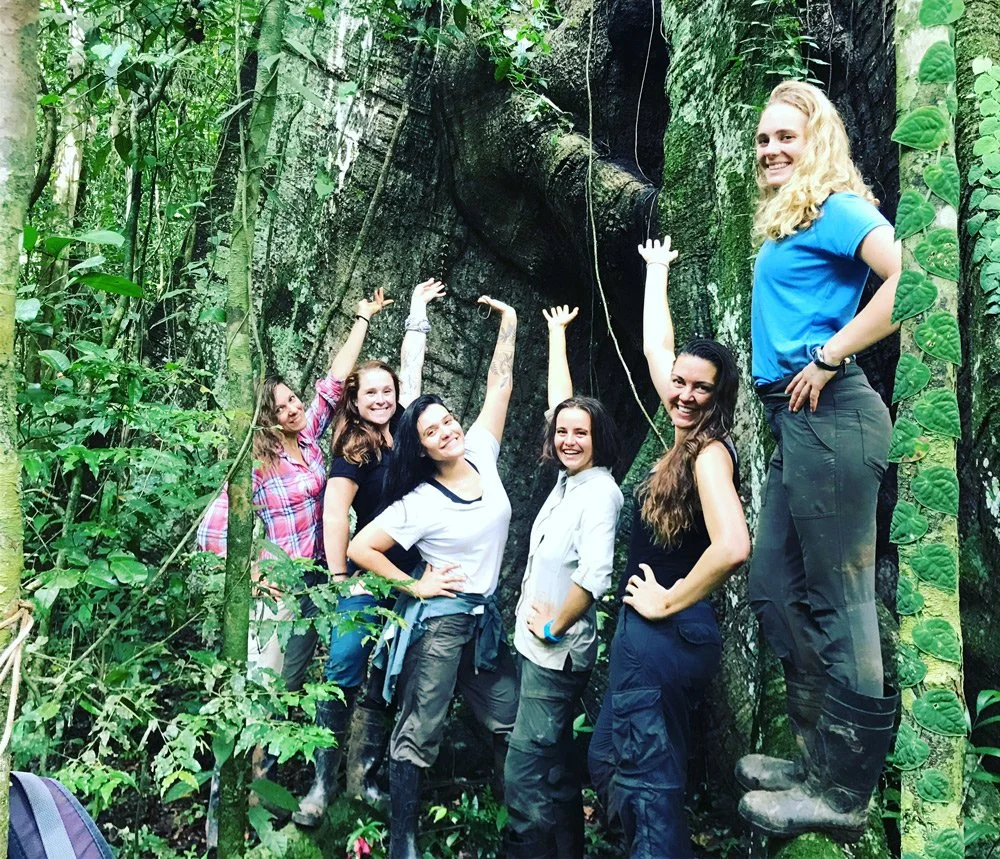
Research
The Cusack CarbonSystems Group investigates global change effects on terrestrial ecosystems. Our current projects focus on drying effects on rainforests, and climate change effects on Alpine tundra.
Panama Rainforest Changes with Experimental Drying (PARCHED)
This project explores ecosystem and carbon processes in response to a drying manipulation across four distinct rainforests in Panama.
Tropical forests are experiencing drying and increased extremes in rainfall events as part of climate change. These forests are also among the most diverse, carbon-rich ecosystems on Earth. They act as “carbon banks,” storing carbon in solid forms and reducing potential carbon losses to the atmosphere as the greenhouse gas carbon dioxide (CO2). Tropical forests are thus important to global societies for biodiversity maintenance, nutrient cycling, and climate moderation.
To understand effects of climate change on carbon storage in tropical forests, the project Panama Rainforest Changes with Experimental Drying (PARCHED) manipulates rainfall inputs to four tropical forests, and then quantifies changes in carbon cycling. The project uses replicated shelters in the forests to reduce rainfall inputs by ~70%, which are then compared to control (undisturbed) sites. The four forests have different rainfall and soil fertility levels, which could influence how they respond to drying. The project was established in 2015, and after shelter installation in 2018 there was a significant initial decline in soil carbon losses across the sites. This was followed by divergence in the responses among the forests, likely related to baseline soil fertility and interannual variation in rainfall. There were also drying effects on soil microbial communities, tree root and stem growth, and nutrient availability. These results indicate that drying is likely to alter tropical forest carbon storage and other ecosystem properties.
Continuing work at the PARCHED project will seek to understand decadal-scale tropical forest carbon responses to chronic drying over year-to-year variation in rainfall. The project will: a) determine whether observed chronic drying effects on tropical forest carbon losses persist over one to two decades; b) determine how soil carbon storage is changing, including long-term storage of carbon; c) complete an ecosystem carbon budget assessing changes in the mass balance of carbon storage in these ecosystems under to drying. The project will help us understand, predict, and manage for potential changes in rainforest carbon cycling with climate change.
This project has been supported by the Department of Energy Office of Science, the National Science Foundation Long Term Research in Environmental Biology program, and the Smithsonian Tropical Research Institute.
EXPLAINING CLIMATIC DRYING IN RAINFORESTS
“Explaining Climatic Drying in Rainforests: Panama Rainforest Changes with Experimental Drying (PARCHED)”. Smithsonian Tropical Research Institute – Educational Videos. Interview by Ana Endara.
FOLLOW PARCHED ON SOCIAL
Instagram | Facebook | BlueSky
Alpine Tundra Biogeochemical Responses to Environmental Change
Alpine tundra turf sections were transplanted downslope to investigate climate change and warming effects on ecosystem processes.
Niwot Ridge (NWT) Long Term Ecological Research (LTER) in Colorado is an interdisciplinary research program that strives to develop a predictive understanding of ecological processes in high-elevation mountain ecosystems. I participate in the Niwot VIII grant on the alpine tundra transplant experiment. This experiment was established in 2024, and in it we manipulated the macroclimate by transplanting tundra turfs (plots of intact plants and soil) from high to low elevation sites along naturally-occurring moisture within sites. The experiment builds on more than 40 years of long-term monitoring, manipulative experiments, and modeling at Niwot Ridge to document, explain, and predict patterns of change in mountain ecosystems while contributing to synthetic conceptual advances in ecology, ecosystem science, and global change biology.
Within this larger, collaborative LTER project, my group studies the responses of soil carbon, nutrient cycling, and root dynamics to a changing climate in alpine soils. We work in moist and dry meadow sites.
This project is supported by the National Science Foundation.
Tropical Root Trait (TropiRoot) and Disturbance (TropiRAD) data synthesis projects
This is a collaborative set of project synthesizing tropical forest root data across bioregions in response to natural and experimental change.
The TropiRoot and TropiRAD projects seek to bring together an international group of tropical root researchers to synthesize existing data and understand broader trends in tropical root dynamics and responses to global change. I founded the TropiRoot Initiative in 2020, and I now co-lead the TropiRAD data synthesis project. TropiRoot held our first in-person workshop in 2023 in Panama at Barro Colorado Island after starting the group remotely during COVID shutdowns.










